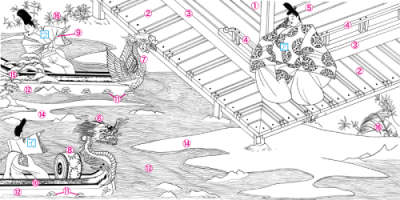Previously, I mentioned that when answering the phone, a large percentage of Japanese women raise (or lower) their voices, becoming almost different people. To be sure, this is probably fine with the person on the other end. But for the people around the woman in question, it must be unsettling to hear her from the backstage area, as it were, switch to her phone voice to make her character more presentable.

The home is probably the representative place where one can get away with such embarrassing behavior. After all, the rest of the family is, more or less, in the same boat. Everyone tacitly agrees that, even if it is just a facade to keep up appearances, having mom act like a “refined lady of the house” by using her raised phone voice, it is better for the appearance of everyone in the family. The man who acts like a “gentleman” in society, but is a spoiled “rich kid” at home (part 92), the guy who is a cool adult outside, but at home is a runty “child,” the woman who is a refined “young lady” when she goes to parties, but on getting home shucks her shoes and clothes, drinks too much, and pukes (part 93); dad, you, me, everyone has their flaws—it’s best we turn a blind eye to each other.
As I just said, we’re all “in the same boat,” but this doesn’t completely explain why it is particularly easy in the home to recognize the smoothing over of character that goes on backstage. A person can be “father to Person A, husband to Person B,” or “daughter to Person C, big sister to Person D;” the home has a variety of overlapping human relationships, not unlike a workplace. Moreover, when the whole family (A through D) gathers in one spot, all these relationships often manifest themselves at once. That “one spot” is the home. At home, the limitations of always attempting to use one character with regards to everyone probably become pretty apparent.
Nick Campbell, who I mentioned last time, is surveying a huge amount of data, spanning a number of years, on the daily conversations of Japanese women. According to this research, the speaker’s tone of voice changes greatly depending on which member of the family she is talking to, for example adopting a raised voice when speaking to her daughter, or a stiff voice when talking to her husband (Campbell, Nick, and Mokhtari, Parham. 2003. Voice quality: the 4th prosodic dimension, ICPhS2003, 2417-2420, //www.speech-data.jp/nick/feast/pubs/vqpd.pdf).
Come to think of it, in Yasunari Kawabata’s Maihime (The Dancer, 1950–1951), Shinako Yagi, the 21 year-old, single protagonist, refers to herself as both “I/me” and in the third person (“Shinako”). Shinako generally calls herself “Shinako” when speaking to her father Moto’o (3 out of 3 times), her mother Namiko (49 out of 55 times), and her mother’s assistant Tomoko Hitachi who is three years older than Shinako (7 out of 7 times). On the other hand, she uses “I/me” when talking to her younger brother Takao (1 out of 1 time), her senior schoolmate Nozu (5 out of 5 times) in whose marriage proposals she takes no interest, and her mother’s lover, Takehara (1 out of 1 time). Cases of her using “I/me” are few, and while the details are vague, her different uses of “Shinako” and “I/me” can probably be explained by whether or not the other party is her superior or inferior, and whether s/he is a member of Shinako’s family. Or rather, it might be more straightforward to say that she uses the third person to create a “child” character that will be coddled by others; when she cannot, or doesn’t want to, be coddled, she uses “I/me.” Although the above discussion does not compare with Campbell’s scientific approach, the idea that at home Shinako’s character changes subtly depending on whether she’s talking to her parents or her younger brother is probably relevant.








